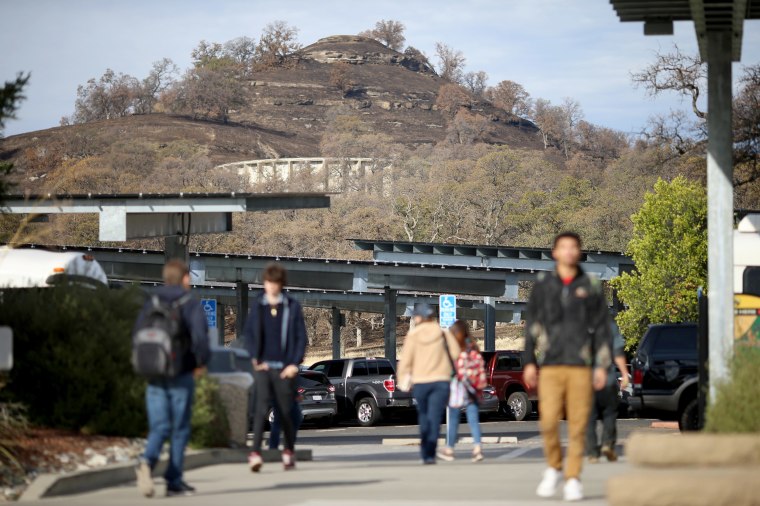This article about the impact of natural disasters was produced by CalMatters, a nonprofit, nonpartisan California policy news site, and The Hechinger Report, a nonprofit, independent news organization focused on inequality and innovation in education.
OROVILLE, Calif. — Officials at Butte College gathered one fall Wednesday in 2018 for a tabletop exercise in disaster planning.
As California’s fire seasons had become more deadly, utilities were threatening to shut off power as a way of preventing downed lines from igniting blazes. Other catastrophes, such as school shootings, were also on officials’ minds.
Administrators at the rural community college wanted to be prepared. They mapped out potential scenarios: What if they had to close the campus? How would they continue classes?
They had no idea they’d be putting those plans into action the very next day, in the face of the most destructive blaze in California history.
Even before the coronavirus brought a halt to in-person classes nationwide this spring, some colleges and universities had confronted climate-linked natural disasters with similarly dramatic effects.
And while this pandemic has raised questions about what might happen to students whose educations are being disrupted, these colleges offer real-life examples of the impact of campus shutdowns.
The fires, hurricanes, floods and other emergencies that have been occurring with increasing frequency do not only threaten lives and homes. At some colleges temporarily shut down by these disasters, they have decreased enrollment, slowed students’ progress toward graduation and deprived faculty and staff of income when they needed it the most, causing some to jump ship.
Related: Canceled research, sports, recitals — college students are coping with more than closed campuses
Many of those universities and colleges also became lifelines for students and for their larger communities after the disasters.
When it comes to crises that can bring a campus to a halt, said Marvin Pratt, director of environmental health and safety at California State University, Chico, which was closed for two weeks by the 2018 Camp fire, “All of us have learned that no one is immune.”
‘We all lost something’
The morning after Butte College’s training exercise, Andy Suleski, the school’s vice president of administration, was heading down Highway 99 to the campus. The wind had picked up, and he checked his phone to see if a power shut-off was on the way. Then he saw the giant plume of smoke.
By the time Suleski reached the college’s parking lot and climbed out of his car, ashes were raining down. It was the first day of the Camp fire, which would kill 85 people in the town of Paradise and the surrounding communities and displace thousands more.
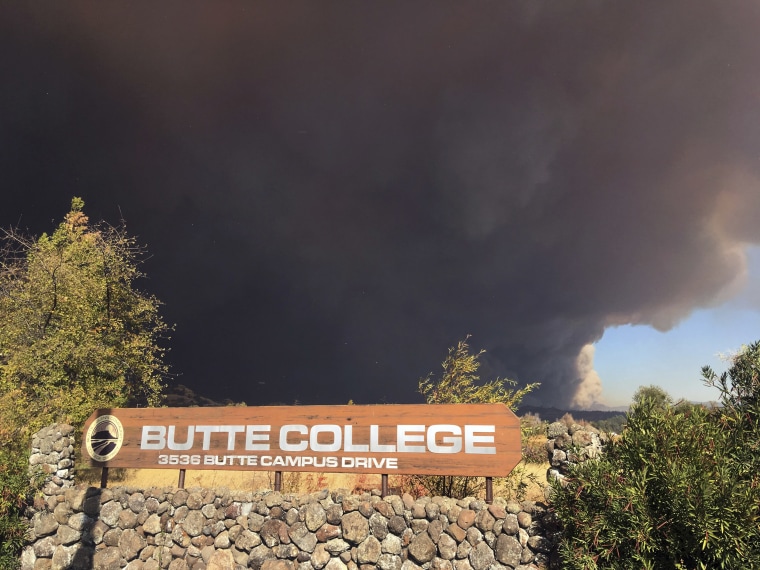
It closed the Butte College campus for more than two weeks, and cost the school nearly $6.5 million, officials say.
“It didn’t matter if you lived in a shack or a mansion, we all lost something,” said Dayna Collett, a student who also works in the college’s student success center, and whose home was destroyed.
Nearly a quarter of Butte College’s 11,000 students reported experiencing homelessness at some point before the fires — low-income students are far more likely than wealthier ones to attend community colleges, the federal government reports — and more than 800 more students faced displacement afterward. Staff from the college’s basic needs center set up shop in parking lots, distributing laptops, gas gift cards and information about mental health counseling. The college let students drop classes without financial penalties.
“It all coalesced into one big question: What do our students need right now to finish the semester and stay in school?” Dawn Blackhorse, a student success specialist at the college, said.
Related: How do you manage college online — quarantined with eight people?
At colleges like Butte, where some students are already struggling to afford food, housing and health care, a shutdown only magnifies that challenge.
In the wake of the 2017 Tubbs fire in California’s wine country, a Santa Rosa Junior College poll revealed that many students were suffering from stress and needed mental health services, Frank Chong, the college’s president, said. More than a quarter reported experiencing a mental or physical health problem as a result of the fire.
“When you’re going through that type of trauma, you don’t think there’s anybody else in that situation, or that nobody cares,” he said. Sending the survey, he said, was also a way for the college to say, “we care about you, tell us how we can help.”
After Hurricane Harvey hit Texas in 2017, Houston Community College disbursed more than $7 million in federal financial aid to students earlier than usual, Shar-day Campbell, communications coordinator for the financial aid office, said.
Despite such efforts, many students at campuses that were temporarily closed dropped out, something administrators fear will happen again as the coronavirus pandemic affects earnings and makes people want to stick closer to home. Butte has seen its enrollment drop by 12 percent since the fire, according to college President Samia Yaqub, while the Tubbs fire contributed to a 6 percent enrollment drop at Santa Rosa.
A long recovery
Unlike with recent floods and wildfires, the effects of the coronavirus aren’t limited to a particular geographic area. But like those localized disasters, the pandemic is projected to leave colleges strapped for cash, with demand for all kinds of services skyrocketing as endowment earnings plummet and state budgets are likely to be cut.
Full coverage of the coronavirus outbreak
Perhaps the closest recent parallel is Hurricane Katrina, which affected more than 50,000 college students, damaging and closing campuses along the Gulf Coast and New Orleans in August 2005. Seventy-four percent of New Orleans college students reported that their academic performance had declined, and 36 percent withdrew from classes.
Enrollment at some community colleges fell to less than half of pre-Katrina levels. Students who had to move frequently or work full-time to support themselves and their families were less likely to come back to school.
The hurricane cost New Orleans colleges and universities an estimated $1.5 billion in building repairs, lost tuition and payroll expenses.
University officials often think of bouncing back from a disaster like the Camp fire in terms of weeks or months, Megan Kurtz, a community liaison at Chico State, said. In reality, she said, “this is a 15- or 20-year recovery.”
Related: Federal money to ease collegians’ coronavirus costs may shortchange some who need it most
Just over a year after the fire, oak trees and grass have again turned the hill behind Butte College’s main campus, once barren and sooty, a healthy green. But even as many students’ living situations have stabilized, some say they are just now beginning to cope with the trauma they had previously bottled up.
Communication studies major Mackenzie Bryan lost her home in the fire, bouncing from hotel to hotel for four months. Today, she lives with her family in a condo and is getting ready to transfer to a four-year college.
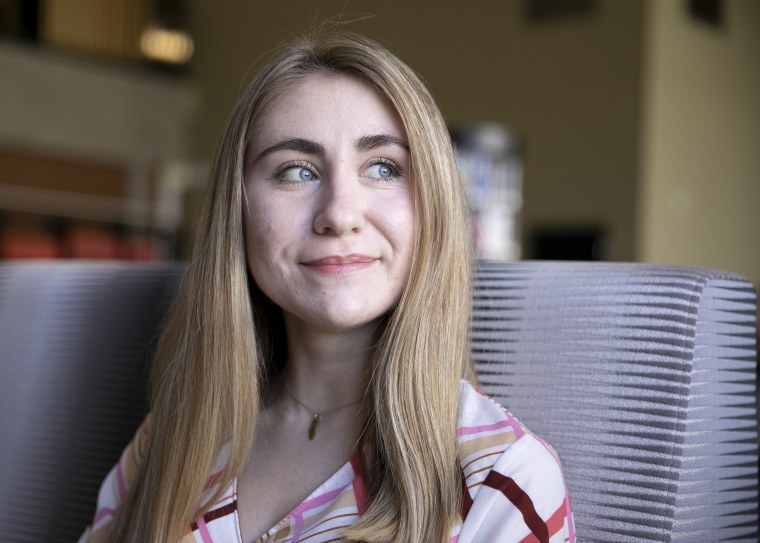
“I can talk about it openly,” she said of the fire, “but I haven’t fully processed it yet. Now, it’s more dealing with it psychologically than physically.”
The college has filled a position for a full-time mental health counselor and plans to hire a second one soon. While many campus health centers focus on short-term counseling, Butte is experimenting with a 12-week program designed to address post-traumatic stress disorder.
At Sonoma State University, demand for counseling grew by more than 50 percent in fall 2017, the semester the Tubbs fire closed the campus for a week; the university called in therapists from other Cal State campuses to help.
Even though enrollment has declined at Butte, demand for basic needs services continues to grow, something that is also likely to happen in the wake of the pandemic. About 250 students visited the campus basic needs resource center each week before the fire; by the beginning of 2020, more than 1,000 were doing so, and the campus had added a basic needs satellite location.
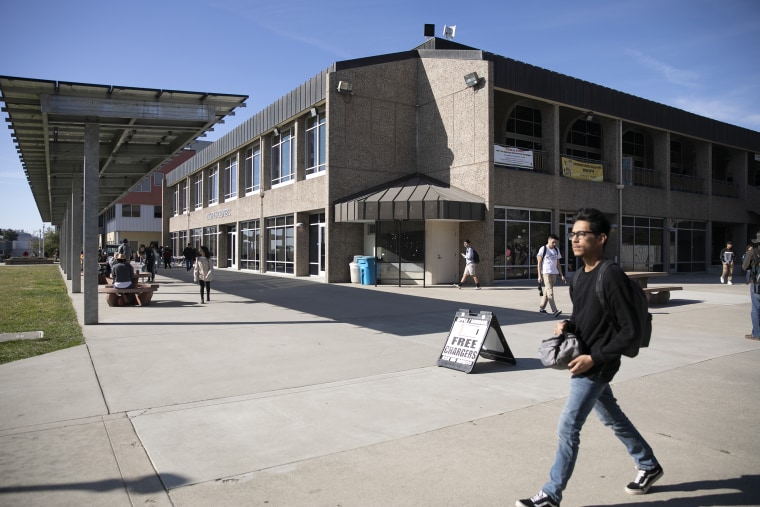
Catherine Osby, a single mother of two studying art and psychology, said she was stopping by the satellite pantry — which offered fresh vegetables, snacks and a place to study— two to three times a week early this semester. “It helps a lot to know this is here, in case me and my kids are running out of food stamps,” she said.
Many of the same circumstances that disrupt students’ lives during a disaster affect faculty and staff, too.
Related: Choosing pass/fail grades may help college students now, but could cost them later
With the Camp fire raging, Butte College President Yaqub put employees, including hourly workers, on paid leave.
“One of the things that we learned is to find a way to help faculty and staff immediately, and a very tangible way to do that is to make sure that they continue to get paid,” she said.
Other colleges navigating emergencies have taken similar steps. After Harvey hit Texas, Houston Community College created a new class of leave that faculty and staff could use for errands, such as meeting with flood insurance adjusters. More recently, the University of California has given workers, including students, affected by the coronavirus closures several additional weeks of paid leave.
The coronavirus era
The pandemic has put all colleges’ emergency plans to the test, reminding them that “it’s not a question of if, it’s a question of when,” Joyce Lopes, director of the emergency operations center at Sonoma State, said.
In just the last three years, that university has weathered two wildfires, power outages that closed the campus for several days and a closure because of smoke from a fire elsewhere. Administrators have learned that they need to train at least three people for each key disaster management role, Lopes said. That way, employees can work in shifts to avoid burnout.
“These are often things that go on the back burner,” she said. “Now people understand why we need to make time to do it.”
Download the NBC News app for full coverage and alerts about the coronavirus outbreak
Colleges and universities are also adapting their curricula to the new normal, developing training programs that can provide workers to help with rebuilding — and jobs for disaster survivors. Butte College trained 2,000 debris removal workers, Yaqub said, many of whom had lost their jobs and homes in the fires. The college also launched six-month certificate programs in construction, refrigeration and heating, ventilation and air conditioning to meet local building demands.
Similar training programs are being planned for people who have lost their jobs in the pandemic lockdowns or need more training to cope with it. The online learning platform edX, created by the Massachusetts Institute of Technology and Harvard University, has already launched a course on ventilator use for medical professionals, for instance. Central Ohio Technical College has made more than $1 million in financial aid available for career training for people out of work because of COVID-19. Wake Tech, a community college in North Carolina, is offering online entry-level computer courses to people who have lost their jobs.
While it’s too soon to tell how the pandemic will affect the future of today’s college students, a survey just after campuses were closed by the coronavirus found that 17 percent lacked reliable and safe housing, 28 percent did not have access to healthy food and 75 percent had higher levels of anxiety, depression and stress. More than half had been laid off from jobs they held or had hours significantly cut back.
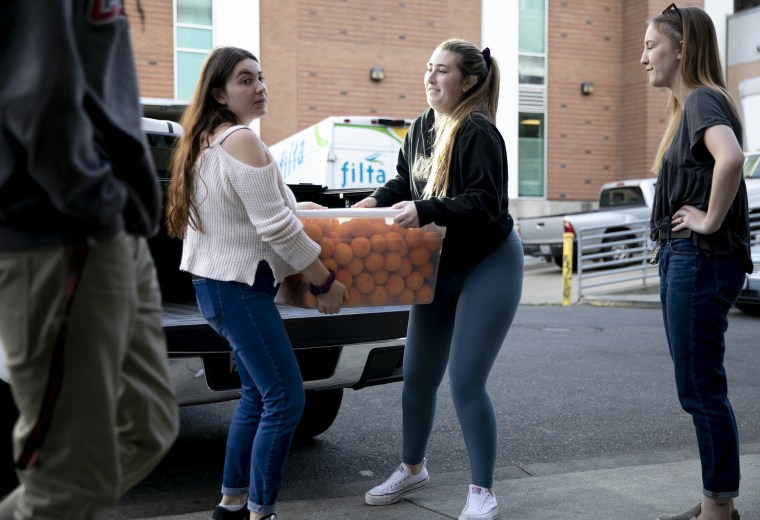
If there’s a silver lining to this catastrophe-prone era, it’s that disasters focus students’ attention on social problems such as climate change and inequality, Chong, the Santa Rosa Junior College president, said.
“I see this is an opportunity for our students to see how to make a difference, and challenge them to address some of these issues in a way that we weren’t successful in doing in our previous generation.”
Sign up for The Hechinger Report’s higher education newsletter.
